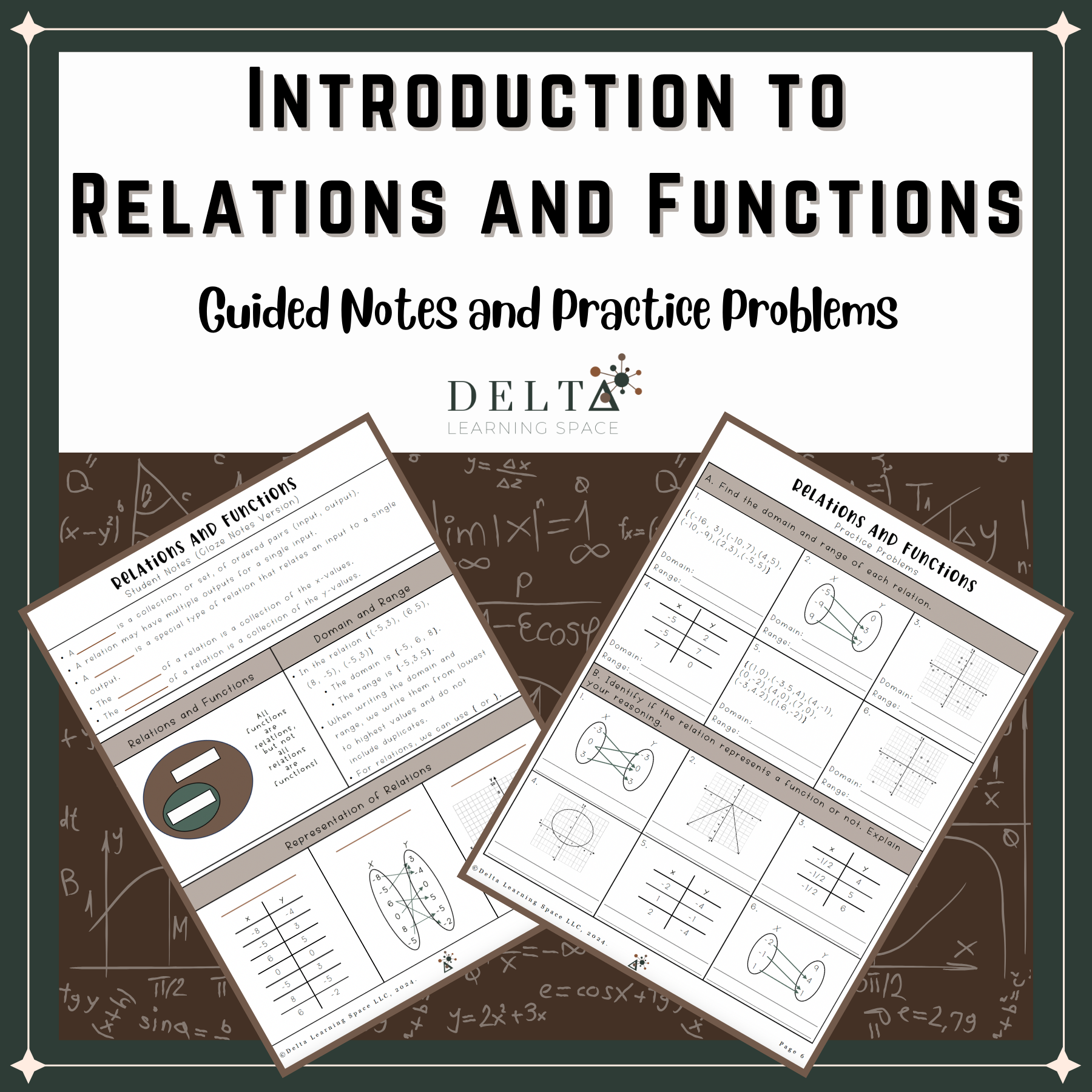Introduction to Evaluating Functions
In our recent discussions, we dove into how to determine the nature of relations and functions and explored methods to identify the domain and range of continuous functions. Now, let's broaden our understanding and focus on the various ways we can evaluate functions—whether algebraically, through a graphical representation, or by using a table.
If you need a quick review or missed the last posts, you can catch up here:
How to Evaluate a Function
When we evaluate a function, the objective is to find the corresponding output (y-value) given an input (x-value). Keep in mind that we can denote this relationship as y = f(x), which means that when a question asks to evaluate, it can either ask for y or f(x) is equal to given an x-value.
Example
can be written as y = x2 - 3
Note: While we commonly use x (input) and y (output) as variables, any letters can represent the input and output. In function notation, the variable inside the parentheses is the input, and the entire notation is the output. For instance, in the function p(n), n is the input, and p(n) is the output.
In this lesson, we will use only x and y to represent inputs and outputs, and will also only use the function notation f(x). In addition, the given x-values will be rational numbers, but these inputs can be any number or even an expression. We will explore expressions in another lesson.
Algebraic Evaluation
To evaluate a function algebraically, we are typically provided with an x-value, such as a specific rational number or in function notation (e.g., f(any rational number)).
Example
OR
If f(x) = x2 - 3, find f(4)
Note: We read f(4) as “f of 4”
To evaluate algebraically, substitute the given x-value into the function's equation and use order of operations to simplify the expression, which will determine the y or f(x) value. If there is more than one term that includes our variable, make sure to substitute the value into every place the variable is.
The title reads “Evaluating Functions Algebraically.” Two examples are given. On the left side reads “evaluate f(x)=x^2-3 when x=4.” 4 is substituted into the place of x, and the answer is f(x)=13 when x=4. The right side reads “If f(x)=x^2-3, find f(-2).” -2 is substituted and answer is f(-2)=1.
When we evaluate a function algebraically, we find the y-value when given an x-value.
Graphical Evaluation
Graphical representations also allow us to evaluate functions. By examining the function graph, we can identify the y-value corresponding to a given x-value, represented as an (x, y) coordinate pair.
The title reads “Evaluating Functions Graphically.” Two problems are given. The first reads, “evaluate when x=4.” The graph of y=x^2-3 is given, and a dot on (4,13) is highlighted. The second problem reads “find f(-2).” The same graph is shown again, and a dot on (-2,1) is highlighted.
Table-Based Evaluation
Alternatively, we can use a table to evaluate a function. The table provides a structured view of the function, making it easy to locate the corresponding y-value for a given x-value.
The title reads “Evaluate a Function Using a Table.” Two problems are given. The first problem reads, “Evaluate when x=4.” Six coordinate pairs are given, and the x-value of 4 is highlighted. The y-value is 13. The second problem reads “find f(-2).” The same coordinate pairs are given but this time x-value of -2 is highlighted. The y-value is 1.
Since evaluating a function involves finding the y or f(x) value for a specific x-value, we can refer to the table to identify the corresponding y-value.
Practice Time!
Try evaluating the following functions. You can find the answers at the end of this post.
The title reads “Practice Time!” and three problems are given. Problem A reads “If f(x)=x^2+2x+6, find f(-1).” Problem B reads, “Evaluate when x=0,” and a graph for the function y=-abs(x-2) + 4 is given. Problem C reads “find f(-3),” and a table is given. The coordinates of the table are {(-3,0.125), (-2,0.25), (-1,0.5), (0,1), (1,2), (2,4)}.
Hint 1 for Problem A: Make sure to substitute (-1) into ALL places where x is.
Hint 2 for Problem A: Remember, when (-1) is squared, it can be expanded into (-1)•(-1), which will equal a positive value.
Conclusion
In the process of evaluating a function, we receive an x-value as an input and are tasked with determining the corresponding y-value or output. This can be achieved through algebraic methods, graphical analysis, or by using tables. Proficiency in solving problems across these three representations enhances our problem-solving versatility.
If you're ready, proceed to the next lessons here.
Solving for a Variable in a Function (coming soon!)
Answers to Practice Time!
-
= 5
-
y = 2
-
= 0.125






